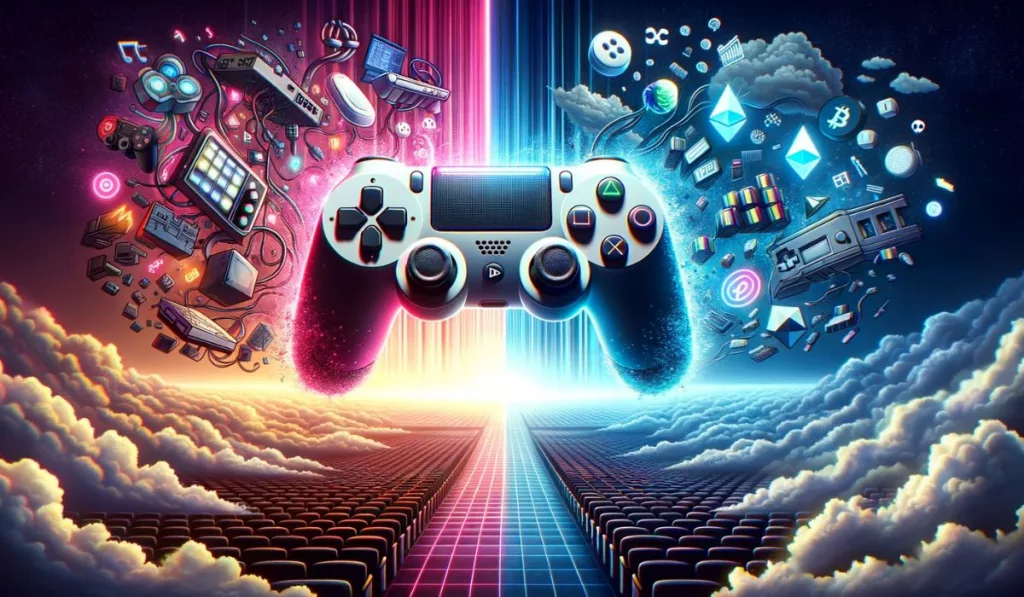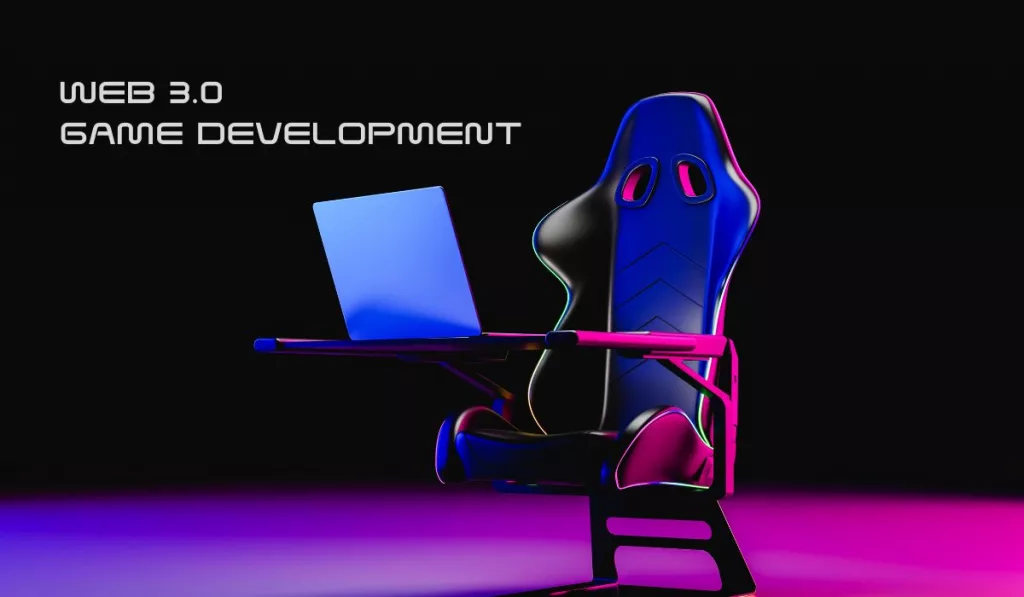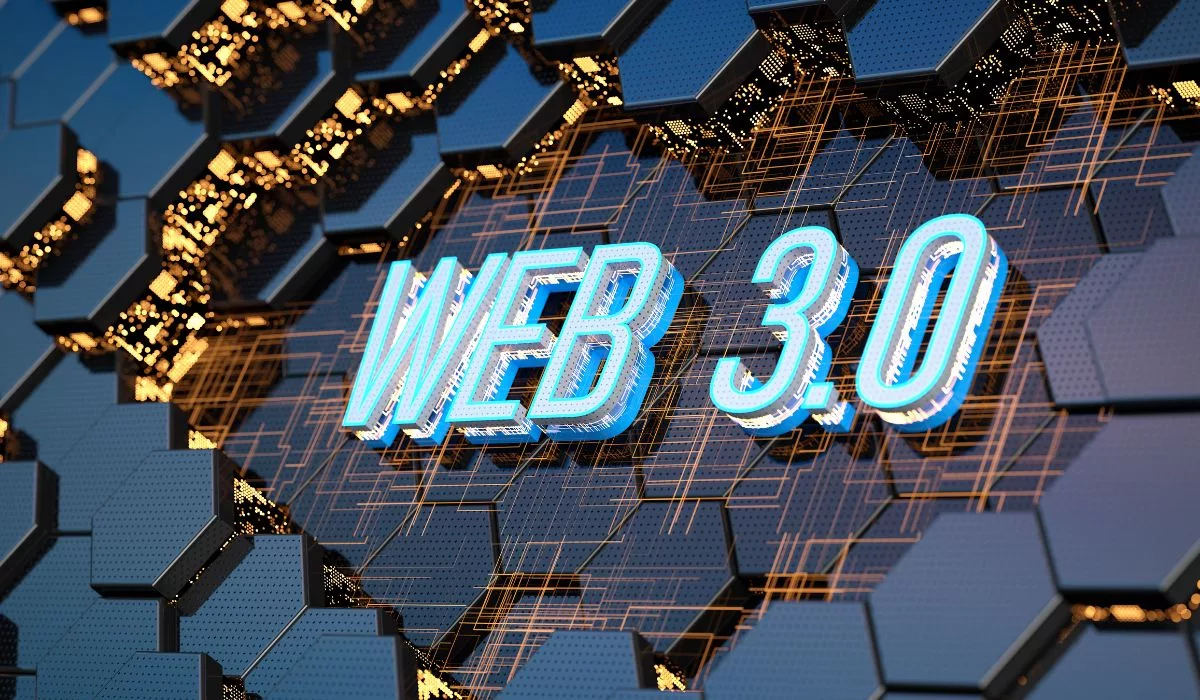The dawn of Web3 technology is not just reshaping various industries but is significantly making waves in the gaming sector. This evolution brings forth a myriad of opportunities for both developers and gamers, transitioning from conventional gaming models to more engaging and rewarding play-to-earn models. In this comprehensive guide, we’ll unravel the process of building Web3 games, touching on the preliminary considerations and the crucial decisions regarding the tech stack.
Also check: Impact of AI on Web3 Advertising: Personalization and Privacy
- Know About Web3
- Recent Statistics Regarding Web3 Games
- Leveling Up: Transition from Traditional Gaming to Web3 Gaming
- The Backbone of Web3 Gaming
- What are the Things to Consider for Web3 Game Development?
- How to Build a Web3 Gaming App?
- Examples and Case Studies
- Upcoming Trends in Web3 Gaming and Continuous Improvement
- Final Words
Know About Web3
Beyond Conventional Boundaries Web3 is not just a technology, but a movement aimed at decentralizing the digital space. Below are its core principles:

- Decentralization: Eliminating middlemen and central authorities, Web3 fosters a peer-to-peer network architecture.
- Transparency: All transactions and data exchanges are transparent, ensuring an unbiased digital environment.
- Immutability: Once data is recorded, it’s nearly impossible to alter, guaranteeing authenticity and trust.
| Web 1.0 | Web 2.0 | Web 3.0 |
|---|---|---|
| Mostly Read-Only | Wildly Read-Write | Portable and Personal |
| Company Focus | Community Focus | Individual Focus |
| Home Pages | Blogs / Wikis | Live-streams / Waves |
| Owning Content | Sharing Content | Consolidating Content |
| WebForms | Web Applications | Smart Applications |
| Directories | Tagging | User Behaviour |
| Page Views | Cost Per Click | User Engagement |
| Banner Advertising | Interactive Advertising | Behavioural Advertising |
| Britannica Online | Wikipedia | The Semantic Web |
| HTML/Portals | XML / RSS | RDF / RDFS / OWL |
Also, have an eye on Top Web3 Development Companies
Recent Statistics Regarding Web3 Games
- The top three most popular Web3 games in 2023, based on daily average unique active wallets, are Alien Worlds (230,978), Splinterlands (132,865), and Planet IX (43,711).
- A study conducted in April 2023 compared the estimated average daily number of players in top Web3 and traditional online games. The data for Web3 player numbers were sourced from Footprint Analytics.
- In 2023, around 3.2 billion people, or about 40% of the world’s population, are estimated to engage in gaming, with total spending nearing $200 billion.
- The Web3.0 blockchain technology market, a backbone for many Web3 games, is expected to be worth more than $6 billion in 2023.
- It’s predicted that about 40% of Web3 games being developed will go live in the next 12 to 18 months, indicating a substantial growth in this sector.
Also have a look at Top Web3 Game Development Firms in NYC, USA
Leveling Up: Transition from Traditional Gaming to Web3 Gaming

The transition from traditional gaming to Web3 gaming is not just progressive, it’s revolutionary. Here’s how:
- Play-to-Earn Models: Unlike the conventional pay-to-play models, Web3 gaming empowers players to earn real value as they play.
- True Ownership: Players have actual ownership of in-game assets, which they can trade, sell or use across game universes.
- Community-Centric Development: The gaming community gets a say in game development, creating a more inclusive and evolving gaming ecosystem.
Also, have a look at: Web3 Vs Metaverse: What Is The Difference?
The Backbone of Web3 Gaming

Blockchain is the underpinning technology of Web3, and here’s why it’s indispensable in the gaming sector:
- Secure Transactions: Blockchain ensures secure, transparent transactions, making in-game purchases and trades trustworthy.
- Verifiable Scarcity: With blockchain, the scarcity of in-game assets is verifiable, which can create and uphold value.
- Cross-Game Compatibility: Blockchain enables interoperability of assets across different games, enhancing the gaming experience.
Also, have a look at: Blockchain Gaming-The Next Big Revolution In Gaming Industry
What are the Things to Consider for Web3 Game Development?
Before diving into the development phase, it’s imperative to have a clear roadmap. This includes understanding the project specifics and the crypto features to be infused into the game.
Project Specifics and Desired Crypto Features
Every game is unique, and so are its requirements. Identify the core features and the crypto elements that will drive engagement and value within the game. These could range from in-game asset ownership, and real-time trading to earning digital currencies as players progress.
Monetary Aspects in Gaming
The play-to-earn model is not just a buzzword but a significant shift in how gamers interact with the gaming ecosystems. Understand and design the monetary aspects, ensuring a fair and rewarding system that provides real-world value for the in-game accomplishments of the players.
Also have a look at Top Blockchain Game Development Companies
How to Build a Web3 Gaming App?
As the gaming world gradually transitions to this decentralized model, understanding how to build a Web3 gaming app becomes crucial for both developers and enthusiasts looking to remain at the forefront of this transformative movement.
Step 1: Choosing the Tech Stack
The technology stack is the backbone of any game development project. When it comes to Web3 gaming, the stack extends beyond the traditional choices to include blockchain interactions.
Commonly Used Technologies
JavaScript and Unity are still at the heart of game development, providing the framework for building engaging gaming interfaces and experiences. Their versatility allows for seamless integration with blockchain technologies, making them a preferred choice for Web3 game developers.
Backend Platforms
Handling blockchain interactions requires a robust backend platform. Moralis is one such platform that has been gaining traction in the Web3 gaming space. It simplifies blockchain interactions, allowing developers to focus on creating captivating gaming experiences rather than grappling with the intricacies of blockchain technology.
Blockchain Integration
Blockchain is the cornerstone of Web3 gaming, facilitating crucial features like asset ownership and transactions. Selecting a suitable blockchain platform and integrating it efficiently within the game is paramount.
Tips for Smooth Integration:
- Educate Yourself and Your Team: Having a solid understanding of blockchain technology is crucial. Invest time in learning and exploring the various blockchain platforms available.
- Choose Wisely: The choice of blockchain platform can significantly impact the game’s performance and the overall gaming experience. Look for platforms that are reliable, well-documented, and have a supportive community.
- Test Extensively: Blockchain integration is complex. Ensure thorough testing to identify and fix issues before they reach the gamers.
Step2: Designing the Game
The ideation of a Web3 game demands a paradigm shift from conventional game design approaches to accommodate the decentralized, transparent, and immutable nature of blockchain. These games thrive on community engagement and player empowerment. The design stages necessitate a player-centric approach coupled with the integration of blockchain features.
Player Types and Game Loops in Web3 Gaming
Identifying the player personas and crafting engaging game loops is critical. Web3 adds a layer of economic incentives which can be intertwined with the game dynamics to foster a rewarding player experience.
Integration of Blockchain Features
Blockchain is the backbone of Web3 gaming, enabling features like wallets, NFT minting, and transparent transactions which are pivotal to the play-to-earn model.
Step 3: Game Development
The actual construction of the game where the ideas morph into interactive gaming experiences.
Building the Game on Desired Platforms
Whether it’s iOS, Android, Windows, or Mac, the development should aim for a cross-platform experience to cater to a broader audience.
Implementing Web3 Functionalities
Integrating Web3 functionalities like connecting to user wallets and minting NFTs is a crucial step. It forms the bridge between the gaming world and blockchain.
Utilizing SDKs for Smoother Development
Leveraging SDKs like Thirdweb’s unity SDK can significantly streamline the development process, making it easier to integrate blockchain functionalities.
Step 4: Engaging Players and Introducing Crypto Elements
The ultimate aim is to immerse the players in a captivating gaming world while seamlessly introducing them to the crypto elements.
It’s prudent to hook the players with the game’s core mechanics before introducing the blockchain elements, ensuring a smooth transition for non-crypto-savvy players.
Developing a Compelling Application for Web3 Gaming
Creating a compelling application requires a perfect blend of engaging gameplay and seamless blockchain integration, making the crypto elements an enriching part of the gaming experience rather than a hurdle.
Making Gaming Products Accessible to Mainstream Audiences
Accessibility is key. The game should cater to both crypto-enthusiasts and mainstream gamers, paving the way for the latter to easily onboard the crypto-gaming realm.
Offering True Ownership of In-game Assets to Players
Empowering players with true ownership of their in-game assets is the hallmark of Web3 gaming, fostering a sense of value and engagement unparalleled in traditional gaming.
Step 5: Overcoming the Top Challenges in Web3 Game Development
The voyage of crafting a Web3 game presents certain challenges, but with every problem comes a solution waiting to be unearthed.
The roadblocks often revolve around scalability, user experience, and the steep learning curve associated with blockchain technology.
Scalability Solutions like Layer 2 Networks
Scalability is the knight in shining armor for Web3 games. Layer 2 solutions such as Optimistic Rollups and zk-Rollups come to the fore, offering faster transactions and lower fees, enhancing the gaming experience manifold.
Enhancements in Blockchain Technology to Support Gaming Applications
The continuous advancements in blockchain technology offer a beacon of hope. Innovations are continually refining the blockchain to better cater to gaming applications, making the integration smoother and more efficient.
Step 6: Testing and Deployment
The stages of testing and deployment are where the rubber meets the road, ensuring that the crafted game is ready to provide a seamless experience to the players.
Thorough Testing to Ensure the Correct Functioning of Blockchain Elements
Testing is a quintessential phase. It’s imperative to ensure that the blockchain elements function as intended, maintaining the integrity and security of the game.
Deployment on Various Platforms and Ensuring Cross-Platform Compatibility
A successful deployment across various platforms like iOS, Android, Windows, and Mac while ensuring cross-platform compatibility is the final frontier. It ensures that the game is accessible to a broad audience, ready to dive into the enthralling world of Web3 gaming.
Step7: Monetization and Player Incentives
In a Web3 game, monetization isn’t just a revenue stream for developers, but a well of opportunities for players too. The fusion of gaming and blockchain facilitates unique monetization strategies that are mutually beneficial.
Creating Earning Opportunities for Players through Play-to-Earn Models
Play-to-earn models are the cornerstone of Web3 gaming monetization. Unlike traditional games, players can earn digital assets or cryptocurrencies as they progress. This model not only incentivizes gameplay but also creates a robust economy within the game ecosystem.
Establishing Internal or External Marketplaces for Trading In-Game Assets
Marketplaces are the bustling hubs of activity in a Web3 game. Whether integrated within the game or established externally, marketplaces enable players to trade, sell, or buy in-game assets. This fosters a thriving economy, further enhancing the play-to-earn model.

Examples and Case Studies
The journey from ideation to a fully functional Web3 game is filled with insights. Examining successful endeavors in the space can provide a blueprint for aspiring developers.
Games like Axie Infinity and The Sandbox have demonstrated the immense potential of Web3 gaming. The use of blockchain technologies like Ethereum and robust game development platforms have been instrumental in their success.
Upcoming Trends in Web3 Gaming and Continuous Improvement
The horizon of Web3 gaming is expansive with evolving trends and relentless pursuits of enhancing player experience.
From evolving play-to-earn models, and cross-game universes to advancements in blockchain technology, the trends are pushing the boundaries of what’s possible in gaming.
The mantra for success in Web3 gaming is continuous improvement. The feedback from the community, analysis of game metrics, and the advent of new technologies should guide the refinement of game functionality and player experience.
Ready to shape the future of Web3? Submit your guest post to us and amplify your voice in the global tech community today!
Final Words
The tapestry of Web3 gaming is rich and intricate. Monetization strategies intertwined with player incentives, real-world examples, continuous improvements, and an eye on future trends are the elements that will define the success of a Web3 game. As the saga of Web3 gaming unfolds, it promises a realm where the possibilities are as vast as the imagination of the creators.










Leave a Reply